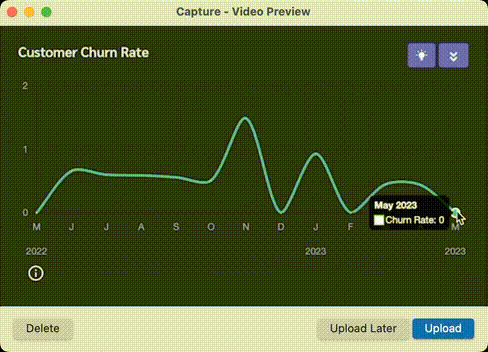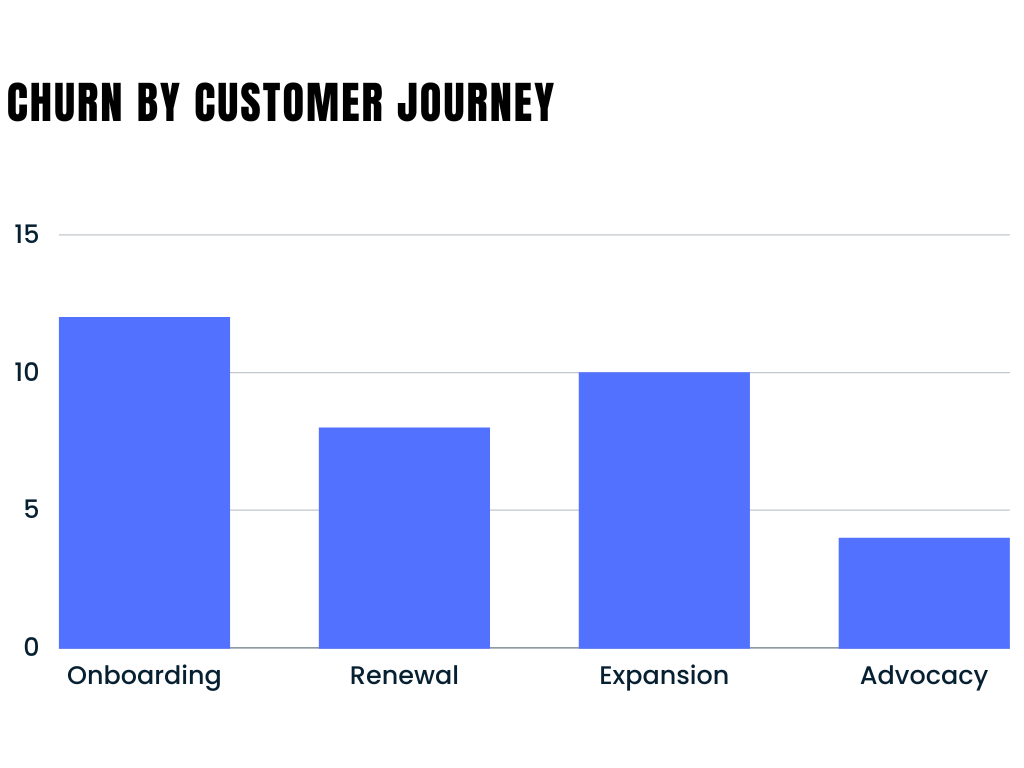
Churn analysis is an essential process that involves analyzing customer behavior to understand why customers are discontinuing a product or service. For businesses that operate on a subscription-based model, churn analysis is even more crucial. A single customer churn means not only losing revenue for a single month. But also leading to month-on-month recurring revenue loss. This can have a significant impact on a business’s revenue and profitability. Therefore, it’s imperative to conduct churn analysis to understand the reasons behind customer churn and take appropriate measures to reduce it.
Performing churn analysis requires a comprehensive study of the three Ws. Discover the key insights and strategies to reduce churn and improve customer retention. So churn analysis typically involves these 3 steps:
Which customers are leaving?
Why are they leaving?
What can you do to reduce churn?
STEP1: Which customers are leaving?
Identify the exact customers who churn. Analyzing customer data can answer this question. This may involve tracking subscription cancellations. Subscription analytics tools provide a comprehensive view of all your business metrics, including churn, in a single dashboard. With these tools, you can quickly assess your churn rate and many more other key metrics.
An example of churn tracking on the InsightDials platform is shown below. This enables businesses to identify customers who churn and take appropriate actions to improve retention.

STEP 2: Why are Customers leaving?
There are several common reasons why customers may choose to cancel their subscriptions or discontinue their relationship with your business. Here are some common reasons for customer churn:
- Poor customer experience: Customers may choose to churn if they have a negative experience with a business. Like poor customer service or long wait times for support.
- High prices: Customers may decide to cancel their subscriptions if they feel that the price of the service or product is too high relative to the value they receive.
- Lack of product or service value: If customers feel that the product or service they are receiving is not meeting their needs or expectations they may choose to cancel their subscription.
- Lack of personalization: Customers may churn if they feel that the business does not understand their individual needs or preferences and fails to personalize their experience.
- Competition from other providers: If customers are offered similar products or services at a lower price or with better features, they may choose to switch to a competitor.
- Changes in customer circumstances: Customers may cancel their subscriptions if their circumstances change. Like, if they no longer need the service or if they experience financial hardship.
- Technical issues: Customers may churn if they experience technical issues with the service or product. Like slow loading times or frequent crashes.
Understanding the exact reasons for customer churn is essential for businessess, as the reasons might be unique or specific to your business. Analyzing the customer churn data and segmenting customers can help in churn analysis. It provides a more granular view of customer behavior and churn patterns. By dividing customers into different groups based on factors such as demographics, usage patterns, or purchase history, businesses can identify specific areas where churn is high and take targeted actions to improve retention.
i) Segment based on subscription plan:
This is a crucial step in churn analysis for subscription-based businesses. Segmenting churned customers based on their subscription plan can provide valuable insights into factors such as pricing, features, and customer needs.
For example, if a particular subscription plan has a higher churn rate than others, it may indicate that the pricing or features of that plan are not aligned with customer expectations or needs. By identifying these factors, businesses can develop targeted strategies to address the underlying issues and improve customer retention.

ii) Segment based on revenue:
Segmenting based on revenue involves analyzing customer churn by dividing them into different categories based on their business revenue. This approach enables to identify customer groups with different needs and behaviors and develop targeted strategies to reduce churn and improve retention.
For example, customers with lower revenue levels/startups may be more price-sensitive and may churn due to pricing or budgetary constraints. Offering targeted discounts, promotions, or flexible payment options to this segment could help reduce churn and improve retention. On the other hand, customers with higher revenue levels may require more personalized attention and support. As they are likely to have more complex needs and requirements. Investing in customer success programs, such as dedicated account managers or personalized onboarding, could be an effective strategy for retaining these customers.
iii) Segment based on the stage of customer journey:
Timing is an essential aspect of churn analysis. In churn analysis, segmented based on the stage of the customer involves analyzing customer churn based on where they are in the customer journey. By this, you can identify how soon the customer churned after activation. This can reveal the areas of the customer experience that are causing the most churn. So by segmenting churned users based on the stage they were in, like onboarding stage, renewal, expansion, advocacy stage, etc. You can identify customer behaviors and develop targeted strategies to improve customer satisfaction and retention at each stage of the journey.

Overall, segmentation provides a more nuanced view of customer behavior. Allowing businesses to take more targeted and effective actions to reduce churn and improve customer retention.
STEP 3: What can be done to reduce churn?
Reducing churn requires a comprehensive approach that addresses the underlying reasons why customers are leaving. Once you have segmented your customers based on different criteria, you can develop targeted strategies to reduce churn. Here are some examples of how segmentation can inform churn reduction strategies:
- Revenue-based segmentation: As mentioned earlier, customers can be segmented based on the revenue they bring in. For high-revenue customers, it may be worth offering customized solutions or a dedicated account manager. This improves the customer experience and increases retention. For low-revenue customers, offering discounts or more affordable plans could help keep them engaged and reduce churn.
- Stage-based segmentation: Segmenting customers based on their stage in the journey can uncover specific areas that need improvement. For instance, if a significant number of customers churn during the onboarding stage. It may be necessary to streamline the process or offer additional resources to help customers get started. On the other hand, if churn occurs frequently during the advocacy stage where customers should ideally refer your product to others, it can be harmful to your business. Offering loyalty rewards, referral incentives, and constant engagement with customers, along with gathering feedback can mitigate this. Thus, for each stage of the customer journey, a targeted strategy should be applied to improve the customer experience and reduce churn.
- Product-based segmentation: Certain products or features have higher churn rates than others. It may be necessary to evaluate and improve those offerings. This could involve fixing bugs or usability issues, adding new features that customers are requesting, or providing better documentation or support resources.
By analyzing churn on a segmented basis and identifying specific areas that need improvement, businesses can create targeted strategies to improve the customer experience and reduce churn.
Conclusion
In conclusion, churn analysis is a crucial process for any subscription-based business looking to improve customer retention and growth. By tracking metrics, segmenting customers, and identifying reasons for churn, businesses can develop targeted strategies to reduce churn and improve customer experience. It’s essential to focus on the entire customer journey and identify areas that need improvement, such as onboarding, renewal, or advocacy stages, and provide the necessary resources and support to improve customer experience. With the right approach, businesses can reduce churn, retain more customers, and achieve sustainable growth.


